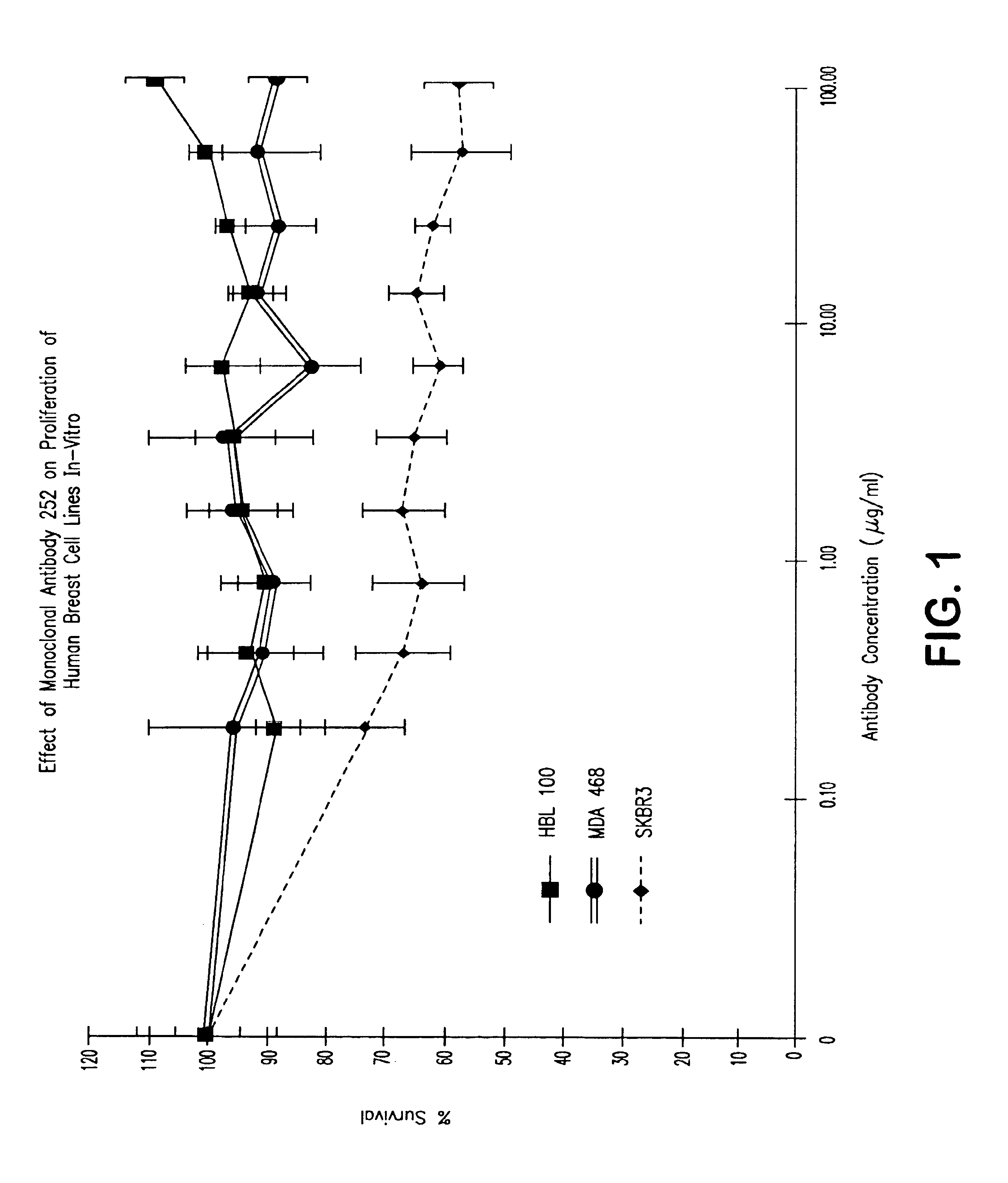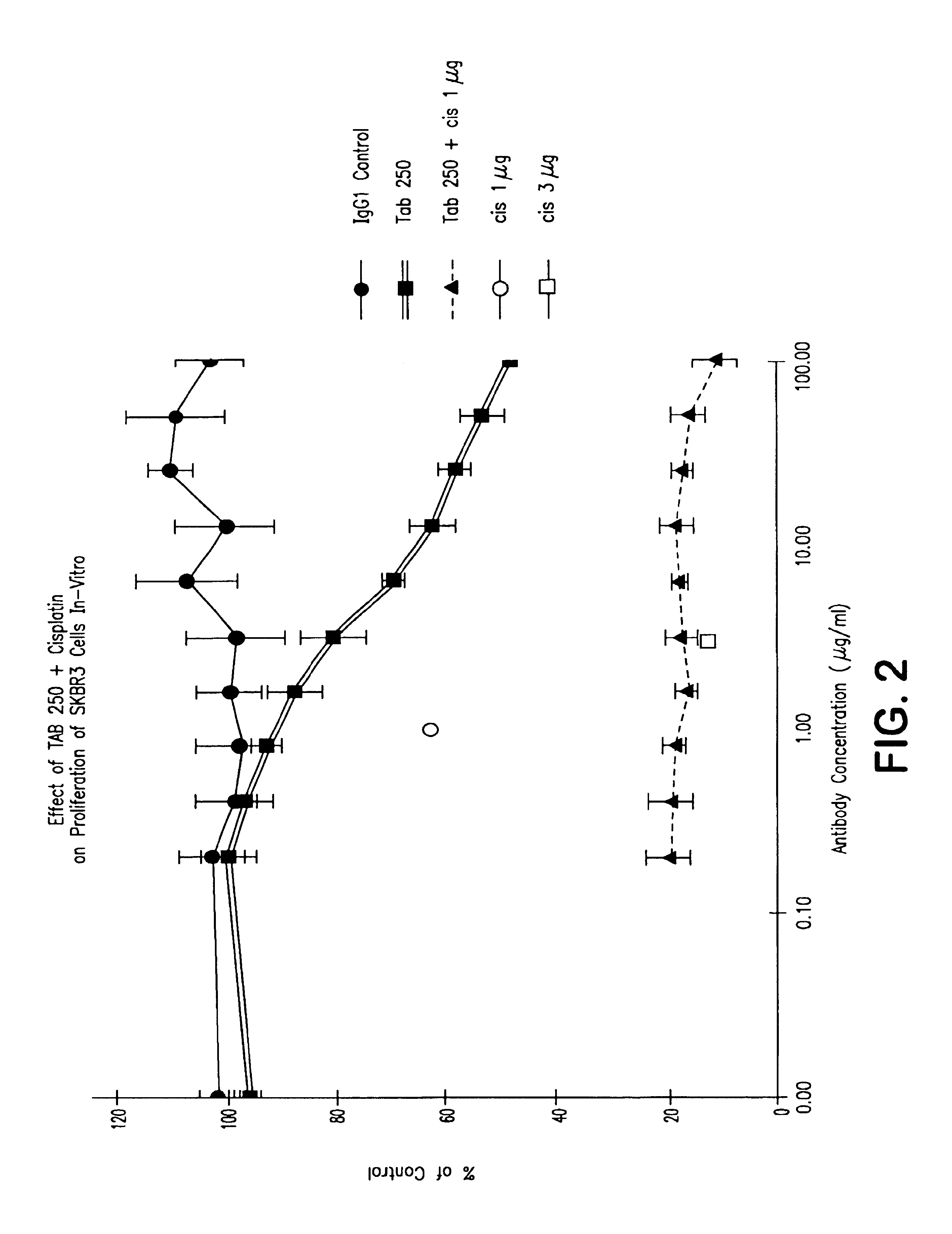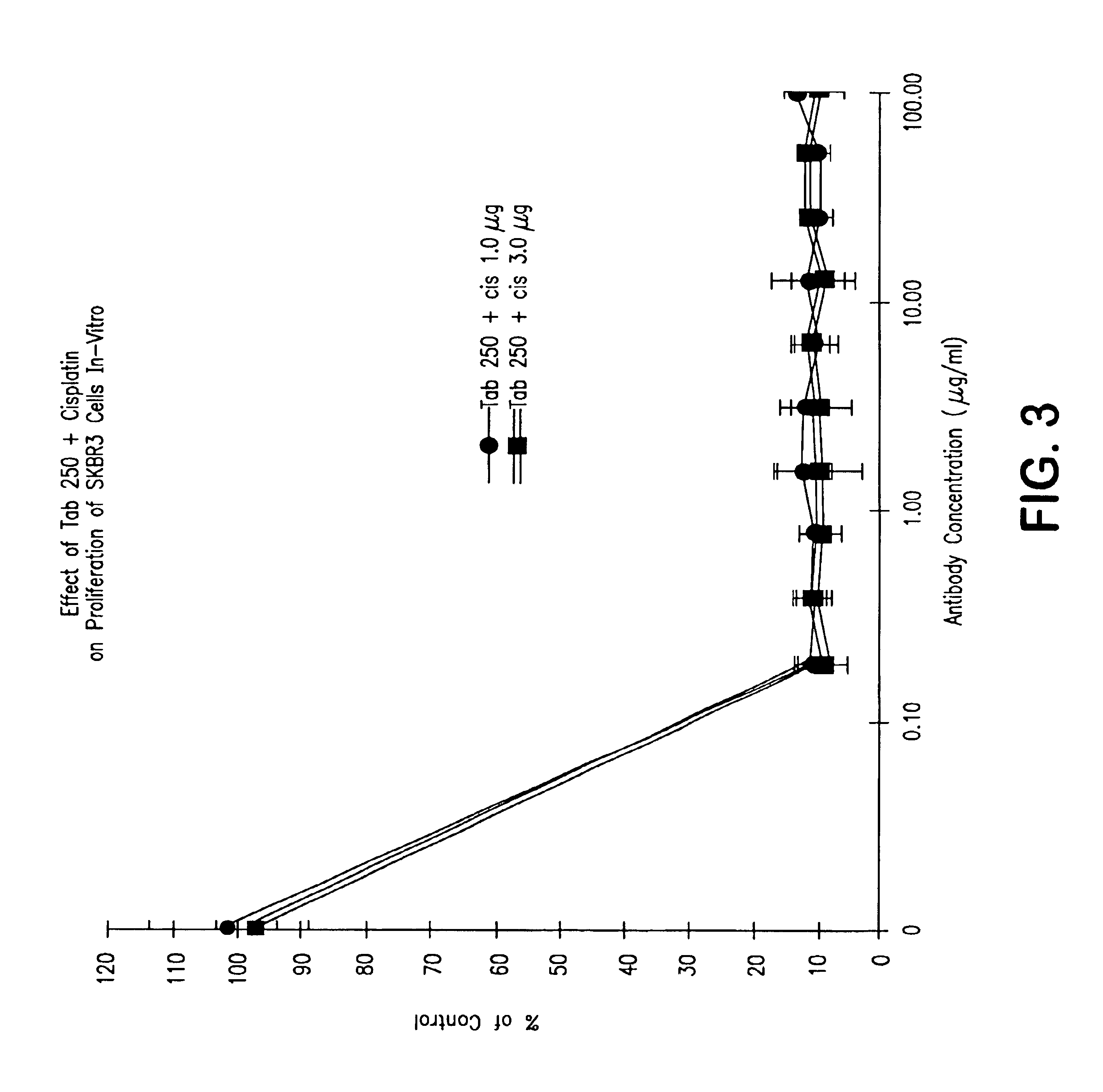Use of ligand-mimicking agents and anti-neoplastic drugs in cancer therapy
a cancer therapy and antineoplastic technology, applied in the field of tumor cell growth impediment and composition, can solve the problems of toxic side effects, inconvenient use of cancer treatment technology, and insufficient clinical studies to date using this technology for cancer treatment, so as to reduce the level of toxic chemotherapeutic agents, inhibit the growth of breasts, and increase the phosphorylation of c-erbb-2 protein
- Summary
- Abstract
- Description
- Claims
- Application Information
AI Technical Summary
Benefits of technology
Problems solved by technology
Method used
Image
Examples
example 1
Preparation of c-erbB-2 Monoclonal Antibodies
[0067]Balb / c mice were immunized intraperitoneally and subcutaneously with 2×106-1×107 NIH3T3 cells transfected with the human c-erbB-2 oncogene, NIH3T3t, (kindly provided by Dr. S. Aaronson, NIH) (Science, 237:178-182) or with a similar number of SKBR3 cells emulsified 1:1 volume / volume in complete Freund's adjuvant. Sera was collected every two weeks and tested for reactivity in an ELISA assay (described below) against formalin fixed NIH3T3 or fixed NIH3T3t cells. Animals with positive titers were boosted intraperitoneally or intravenously with cells in PBS, and animals were sacrificed 4 days later for fusion. Spleen cells were fused with P3-X63Ag8.653 myeloma cells at a ratio of 1:1 to 7.5:1 with PEG 4000 as described by the procedure of Kohler and Milstein (Nature, 256:495-497). Fused cells were gently washed and plated in 96-well plates at 1-4×106 cells / ml in RPMI 1640 medium. Wells were fed with HAT medium 24 hours after the fusion ...
example 2
MTT Assay
[0071]The MTT assay is generally used to assess cellular viability as a function of mitochondrial activity. The assay was used to examine effects of cisplatin with and without the c-erbB-2 monoclonal antibodies and was carried out as follows:
[0072]SKBR3 cells were seeded in 96-well microtiter plates (1×104 cells / well), and 24 hours later, dilutions of TAb 250 or a non-specific IgG1 isotype control antibody were added followed immediately by cisplatin (1 μg / ml or 3 μg / ml). Plates were incubated for an additional 72 hours. MTT was added for 4 hours and the crystals dissolved with isopropanol / 0.04N HCI / 0.3% SDS. Absorbance at 570 nM was determined using an ELISA reader. It was found that growth inhibition was restricted to cells expressing the c-erbB-2 protein. FIG. 1 demonstrates the response of SKBR3 cells in contrast to two other breast cell lines that do not express c-erbB-2. Neither HBL100 nor MDA468 (which overexpress EGF receptors) was inhibited by the TAb 252.
[0073]The...
example 3
Time Course Study
[0080]Using the MTT assay described in Example 2, a time course study of treatment on SKBR3 cells with TAb 250 in combination with cisplatin was conducted. The SKBR3 cells were plated as described for the assay, then antibody and drug were added for 6, 12, 24, or 48 hours and then gently washed off. Each of the cultures was refed with growth media and the plates were incubated for up to 72 hours. As shown in FIGS. 6A, 6B, 7A, and 7B, the combination of TAb 250 and cisplatin had an enhanced effect after 24 hours of treatment, with a more pronounced effect after a 48-hour exposure.
PUM
| Property | Measurement | Unit |
|---|---|---|
| Fraction | aaaaa | aaaaa |
| Fraction | aaaaa | aaaaa |
| Density | aaaaa | aaaaa |
Abstract
Description
Claims
Application Information
 Login to View More
Login to View More - R&D
- Intellectual Property
- Life Sciences
- Materials
- Tech Scout
- Unparalleled Data Quality
- Higher Quality Content
- 60% Fewer Hallucinations
Browse by: Latest US Patents, China's latest patents, Technical Efficacy Thesaurus, Application Domain, Technology Topic, Popular Technical Reports.
© 2025 PatSnap. All rights reserved.Legal|Privacy policy|Modern Slavery Act Transparency Statement|Sitemap|About US| Contact US: help@patsnap.com



